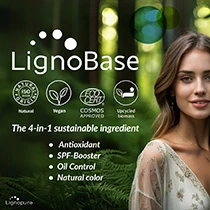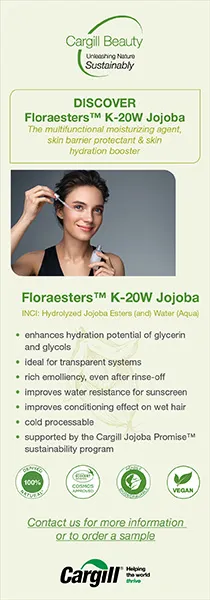ECHA finds cancer-causing chemicals in cosmetics that violate REACH regulations

The European Chemicals Agency (ECHA) finds 6% of inspected cosmetic products contain dangerous substances to human and environmental health that are banned under persistent organic pollutants (POPs) and REACH regulations.
A pilot project by ECHA’s Enforcement Forum investigated 13 European Economic Area countries and checked approximately 4,500 cosmetic products. The national enforcement authorities inspected ingredients list for the presence of perfluorooctanoic acid (PFOA), long-chain perfluorocarboxylic acids (PFCAs) and cyclic siloxanes D4 and D5.
Experts warn the chemicals can cause cancer, affect fertility and damage the environment. Authorities found that 285 of its inspected cosmetics included these hazardous chemicals whose use is banned in these products.
Damaging reproduction
ECHA found the following chemicals:
- Perfluorononyl dimethicone
- Perfluorooctylethyl triethoxysilane
- Perfluorononylethyl carboxydecyl PEG-10 dimethicone
- Cyclopentasiloxane (D5), cyclomethicone (a blend of D4, D5 and D6), cyclotetrasiloxane (D4).
Perfluorononyl dimethicone was primarily in eyeliners and lipliners. D4 and D5 were in hair conditioners and hair masks.
Perfluoroalkyl dimethicone degrades into PFOA and PFCAs. PFOA and siloxanes, D4 and D5, break down slowly in the environment and build up in humans and other species. PFOA is toxic to reproduction, suspected of causing cancer and persistent in the environment. D4 is also suspected of damaging fertility.
 Some cosmetic products found in Europe have chemicals that affect fertility.These substances are not allowed in cosmetics as they have been identified as POPs or (very) persistent, (very) bioaccumulative and toxic (PBT/vPvB) that adversely affect human health and the environment.
Some cosmetic products found in Europe have chemicals that affect fertility.These substances are not allowed in cosmetics as they have been identified as POPs or (very) persistent, (very) bioaccumulative and toxic (PBT/vPvB) that adversely affect human health and the environment.
Their use is banned under the Stockholm Convention on POPs or restricted under the REACH Regulation. The Stockholm Convention and the Aarhus Protocol regulate POPs worldwide.
Earlier this week, Personal Care Insights reported that a European Ombudsman investigation also accused the European Commission (EC) of delaying the ban of products that may cause cancer, infertility and other harm to health for nearly two decades. In response, the European Environmental Bureau told us the EC “prioritizes business interests over human and environmental health.”
Meanwhile, industry consultant group Obelis told us that consumers and professionals should stop using glyoxylic acid after several reports of acute kidney failure surfaced due to the ingredient in hair styling cosmetics, the French Agency for Food, Environmental and Occupational Health & Safety consumers and professionals should stop using the ingredient.
Cosmetic chemicals research
The ECHA inspections occurred between November 2023 and April 2024 and checked cosmetics’ ingredient lists, which can be easily done by consumers.
“Consumers should be aware that the restricted substances were found in different types of cosmetic products, from various sellers and at all price ranges.”
Enforcement authorities have taken measures to remove the non-compliant products from the market. In most cases, the first step was issuing written advice to guide suppliers on how to comply with the law. At the time of writing the report, investigations were still ongoing in about half of the cases.
ECHA is responsible for REACH and POPs regulations that apply to cosmetic mixtures. The pilot project aims to contribute to the enforcement of integrated control of chemicals in cosmetics under the regulations.
In recent cosmetic chemicals research, the UK government’s Office for Product Safety and Standards called on the beauty industry to submit scientific information about cosmetic ingredients before safety assessments.












